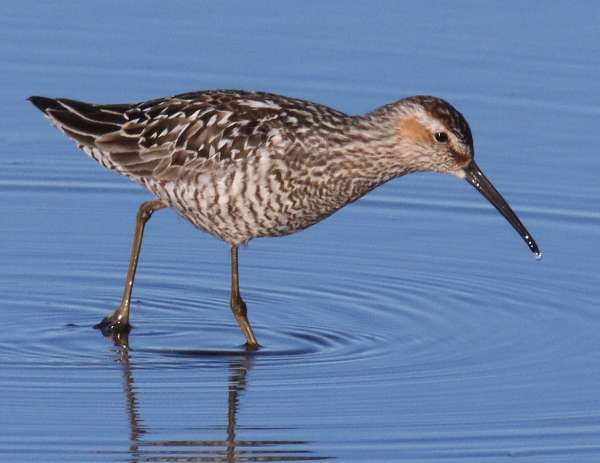
The surprise of a pair of Stilt Sandpipers in full breeding plumage was fueled by the fact that they should have been nesting in the high Arctic the last week of June.
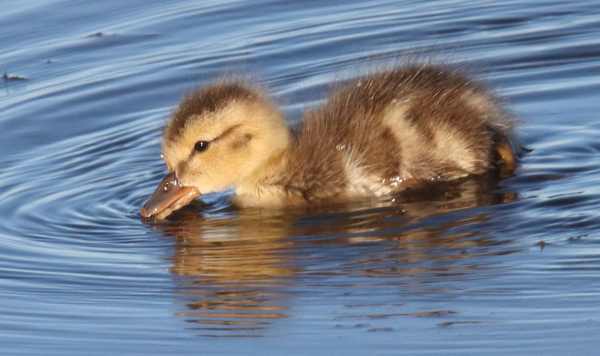
Among the new hatchlings were many new duckling broods, one of which included this recently hatched Gadwall duckling that was feeding in the company of 6 other ducklings under the supervision of an adult female.
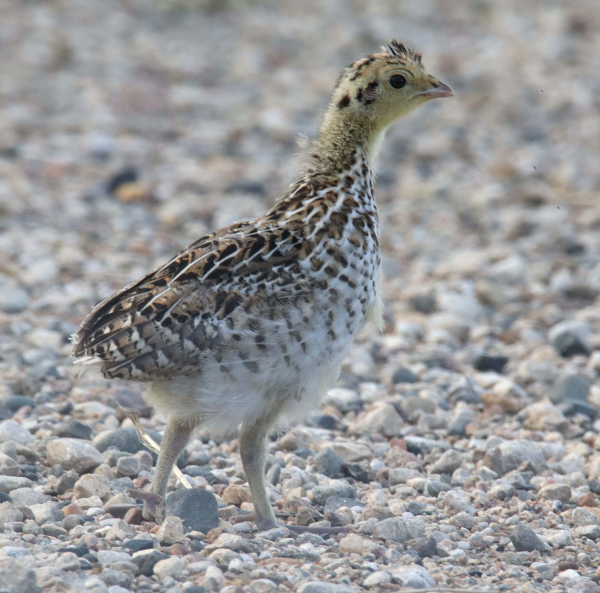
A young Sharp-tailed Grouse provided a relatively rare sighting and photo opportunity as it emerged from the tall thick cover of native prairie grasses.

On an evening when 15 White-faced Ibis were feeding in a nearby rainwater pool, the primary food appeared to be earthworms.
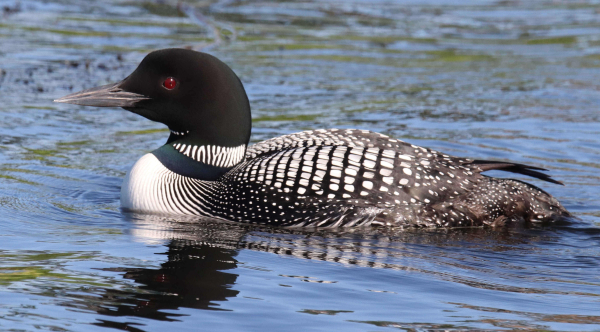
A Minnesota road trip provided a memorable pontoon ride with great friends in a different environ. Watch for more photos of Common Loons in next week’s issue.
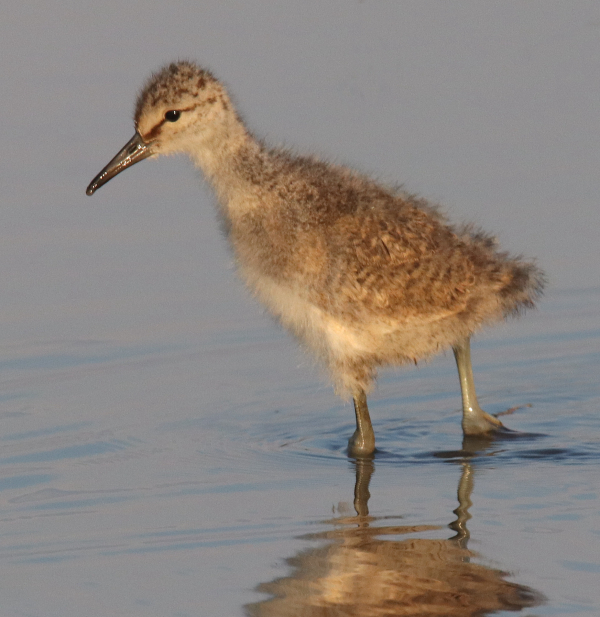
In a small rainwater pool a few hundred yards south of home, where a pair of American Avocets, a pair of Willets, and several Killdeer have been present, Sunday evening’s surprise was a duo of downy Willet hatchlings foraging in the shallows.
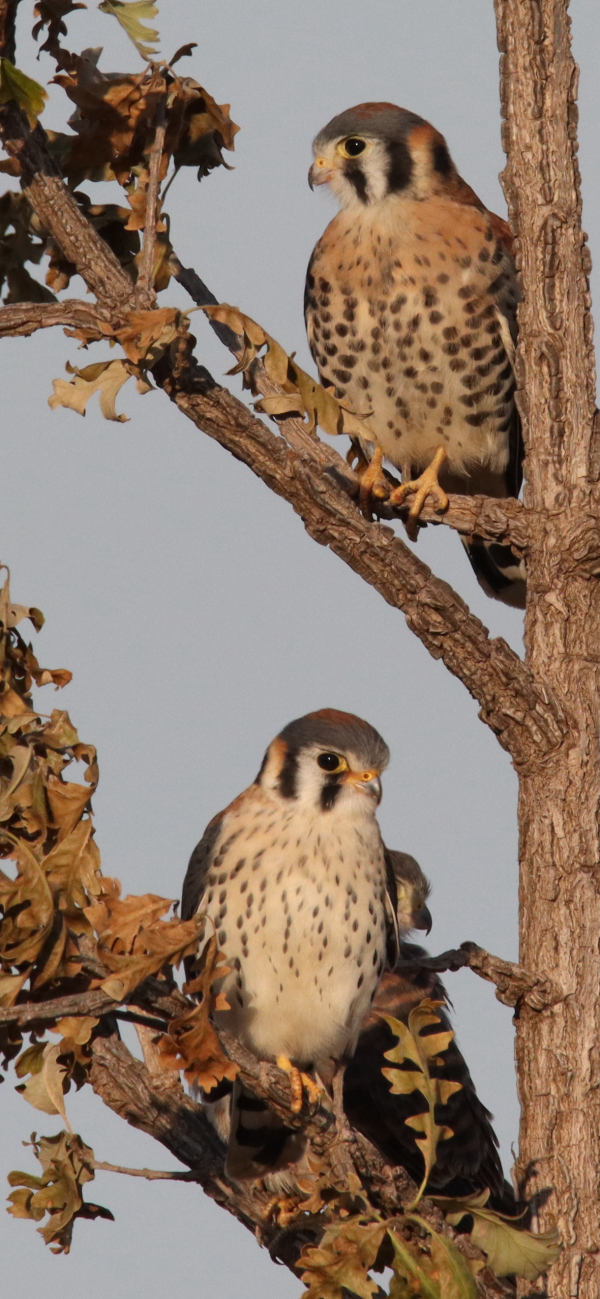
Perhaps the biggest excitement over the past 2 weeks was finding, observing, and photographing a brood of 4 American Kestrel fledglings, which is described and illustrated in the Bird Photography feature in this issue.
|
The last week of June and first week of July were filled with new fledglings and hatchlings, all “escaping” the confines of a nest and investigating a new world – new to them. Fledglings observed included Eastern Kingbirds, American Kestrels, Ring-necked Pheasants, Mourning Doves, Yellow-headed Blackbirds, Black Terns, Barn Swallows, a House Wren, and Orchard Oriole; and hatchlings included Sharp-tailed Grouse, Willets, a variety of broods of ducklings (Mallards, Gadwalls, Blue-winged Teal, Redheads), and Common Loons, although to find loons I traveled to visit a different environ of the eastern woodlands and lakes country in central Minnesota.
There were some surprises too, and keeping with my spring theme of finding Arctic-nesting shorebirds making rare appearances in the area, I found 2 Stilt Sandpipers in full breeding color that should have been nesting in the Arctic tundra the last week of June. Stilt Sandpipers are not so rare during migration, but during the peak of the nesting season, they should have been in the high Arctic. There are also 2 Lesser Yellowlegs that should be nesting in the boreal forest, and there’s a Greater Yellowlegs too – all at my shorebird hotspot, Charo Marsh.
Charo is also hosting several broods of Mallards and Gadwalls, and a Redhead brood, so far. And although the prairie grasses are thigh-high, I sighted 2 broods of Sharp-tailed Grouse in the opening created by the rural gravel road. Two miles to the west I sighted a group of Ring-necked Pheasants on the edge of the road too. After watching them slip in and out of tall grass a bit, it became apparent this was a rather unusual combination of 2 broods with 2 adult females, 6 fledglings aged a few days apart, and even a colorful male attached to the group.
At Herb’s Marsh, adjacent to Herb’s Lake, a lone Red-necked Grebe has been obvious, which suggests its mate is incubating eggs in a nest hidden in the surrounding cattails. I’ll be watching for the hatchlings to appear with the adults, hopefully providing some future photos. As noted in my last editorial, this marsh is hosting several duck broods – the broods only tend to move into an open viewing area when the water surface is fairly calm. There should be some Redhead and Lesser Scaup broods on the way considering the pairs and loose flocks on hand now.
Recent weeks of rain have created many shallow ephemeral ponds that local shorebirds and ibis are taken advantage of. For example, just a quarter mile south of my office a pair of American Avocets, a pair of Willets, a pair of Lesser Yellowlegs, and as many as 9 Killdeer feed at 2 rainwater pools. Three miles south I was glad to find 3 White-faced Ibis probing in a shallow pond that Blue-winged Teal, Mallards, Gadwalls, and Killdeer also found. Better yet, the following evening I was surprised to find 15 ibis feeding in the few inches of rainwater, and my photographs documented the food I suspected they were feasting on – earthworms.
The next afternoon, as I approached the same pool I noticed an adult Bald Eagle gliding above the area, and as I reached for my camera in advance of arriving on the scene, the eagle dipped low toward the pool. As it flew upward again, I was surprised to see it appeared to be carrying prey in its talons – an apparently easy grab and go catch. My first impression was that the prey was an ibis, because I could see the long legs and toes, as well as the long, seemingly curved bill. But I didn’t get a good look, and by the time I had a binocular look the eagle was landing in a field some distance away. I didn’t see any ibis flush from the pool, but 4 Willets returned, which made me second guess my ibis impression – hmm. It seemed too large to be a Willet, wasn’t a duck; I’m sticking with ‘possible ibis’ as prey.
Minnesota Cruising
There is such a dramatic difference between the Great Plains of Dakota where I live and the woodlands of Minnesota where my friend Andy lives. Andy’s lake home is one of the western-most locations where you can find Common Loons in central Minnesota, and the loons have created something of a focal point for a number of friends to gather for loon photo cruises, inspired and promoted by me of course. But Andy has the perfect lake, the perfect luxury pontoon boat, and he has become an ace loon photography boat captain. Joining us again was our friend Linda, who has a summer lake home nearby, but who lives in Hollywood; yes, that Hollywood, she lives just north of the Hollywood Bowl.
The ship set sail at about 5:15pm, and I’ll share the full story in next week’s Bird Photography feature, but herein let me share the difference in birdlife between the woodland and lakes country and the prairie and wetlands landscape. The Minnesota habitats yielded quality views of Wood Ducks, Trumpeter Swans, Ospreys, Bald Eagles, Turkey Vultures, Mallards, Green Herons, Great Blue Herons, and of course, Common Loons. A couple miles before I arrived at Andy’s dock, I found a feeding group of 3 Turkey Vultures that had apparently just been chased off a fairly large carcass by an adult Bald Eagle that held a carcass in its talons.
The sunlight was right, beaming from behind me, and the 4 scavengers were standing on a mowed hillside that looked like a mowed lawn. While the vultures stood motionless, the eagle tried move the carcass away from the vultures, spreading its broad wings and trying to rise up in flight, but only making a jump that landed a few feet uphill each time it tried to hoist the food. I hoped to get a fine foto of the eagle with its wings spread above its head, but it always turned in the wrong way it seemed. As the eagle reached higher ground, it tried to take flight, and actually managed to get a couple feet off the ground with the unidentified animal in tow, sweeping low across the highway – probably startling a couple drivers in the process – and landed in a nearby cut hayfield. At that point I had an appointment to make, and continued to my loon rendezvous with Linda and Andy.
Homies
During the past 2 weeks my yard theme could be summed up as “birds have been coming and going,” and I’m convinced that’s the new normal in my yard. Significant sightings have been a Hairy Woodpecker, a pair of House Wrens, 2 fledgling Mourning Doves, and a quick visit by 2 male American Goldfinches. The Western Kingbirds come and go too, mostly in the treetops and the open air between trees. A House Wren was singing from a perch outside my bay windows Sunday, and Monday morning I was especially surprised to see a new fledgling House Wren near my front door, accompanied by at least 1 adult – hope they stick around.
The oriole picture is the most perplexing; among the Baltimore Orioles, only the adult female remained by July 1st, a holdout from May migration and one I thought might be nesting – and she may have. A new adult male Baltimore Oriole visited the feeder for a couple days, but I haven’t seen a Baltimore since before Independence Day (booo).
A new female Orchard Oriole has been the most regular jelly feeder visitor, and a new male Orchard Oriole has been regular the past week too. Last Saturday a new yearling male Orchard Oriole perched near the adult female Orchard as she ate jelly, but when she left he moved to nearby branch, then left without feeding. Another yearling male Orchard with some molting around the black bib plumage dropped in Monday, and that yearling male returned Tuesday afternoon to eat grape jelly. Being pretty nervous, his behavior underlines that he’s a new visitor.
Still very regular jelly eaters are Gray Catbirds, House Finches, and adult American Robins. All fledgling robins suddenly vacated the area, in my yard and far beyond, so considering all the above examples, many birds are on the move, released from the confines of mating and nesting perhaps, but at least 1 pair of robins appear to be renesting after fledging a brood, still utilizing my jelly offering. Now I wonder when hummingbirds reappear. When will new Baltimore Orioles stop in, and for how long will they remain? And what dispersing birds will surprise me? I’ll keep you in the loop, week by week.
A bit beyond my usual “yard” reporting location, Sunday was a cloudy day with an afternoon thunderstorm that poured big drops of rain for a while. During what seemed to be a break in the clouds with some rays of sunshine I bolted from my office with the hope of checking for duck broods, but I didn’t get far. In the aforementioned rainwater pool just a few hundred yards south of my office, I saw 2 roundish gray downy birds – American Avocet hatchlings? I checked with binoculars and they were too gray to be young avocets – they were Willets! I haven’t seen many Willet hatchlings, and they were likely about 5 days old, maybe 7; but I was astounded that attracted to the little rainwater pool a pair of Willets had nested in the surrounding short vegetation and now was watching over 2 beautiful hatchlings.
I took a few photographs, and the adults were not vocal while I stood in the open with my camera. The beautiful hatchlings were mostly oblivious, busy foraging in the shallowest edges of the pool. It was cloudy though, so I returned the next morning for a short period; then tried for photos in earnest in the late afternoon without much luck. Finally, about 7:40pm I managed a few photos when the sun slipped out from behind a growing cumulous cloud. With these hatchlings so close, you will probably see a series of photos forthcoming to show their rapid growth and development – we’ll see.
Then, just as I was putting the finishing touches on this issue of The Birding Wire yesterday afternoon, an adult female Orchard Oriole flew in to perch on my primary jelly feeder, followed by a fledgling with bright new yellow plumage. The fledgling was permitted to eat jelly as the adult ate, and after the adult vacated the fledgling stayed to get more of the sweet jelly treat – Super!
Kestrel Fledglings
During the Independence Day break, finding a newly fledged brood of American Kestrels fueled 2 exciting photo episodes. During my initial observations, the initial group numbered 3 fledglings (2 males and 1 female), but when I returned a week later another male had joined the fledged brood, likely the last to fledge after my observations. The young kestrels could fly fairly well, but they were still exercising and practicing the skills, flying ever-faster as they chased each other with more twists and turns.
The young kestrels were also honing their hunting skills, but most of their hunting was done on the ground while walking, running, hopping, or gliding down from convenient metal posts. They still liked to perch near one another, and often flew in to check out a hunting effort by another fledgling. For the rest of the story and associated photos, I’m going to refer to the Bird Photography feature in this issue, but I’ll add that it has been quite a delight to observe and photograph these young kestrels during their post-fledging period. In fact, I’m going to check back on them again Wednesday to see if they are still around, and how they are progressing if still on territory.
The fledgling kestrels are the kind of treat we all hope for and search for during this period when the nesting season progresses into the fledging period. It’s a period in the lives of birds that is especially fun to observe and study, and it’s a critical time in the lives of young birds when they are still under the care of the adult pair, but learning to become self-sufficient. Watch for fledglings and learn more about birds in the process during your July birding episodes. Good Luck!
Article and Photos by Paul Konrad
Share your bird sightings and photographs at editorstbw2@gmail.com